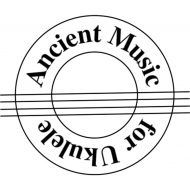Composers listed in alphabetical order by last name. All sources are Wikipedia.
Anonymous compositions are fewer in the Baroque period and the Sarabande is from the 17th Century.
Johann Sebastian Bach (1685 – 1750) was a German composer and musician of the Baroque period. He is known for instrumental compositions such as the Brandenburg Concertos and the Goldberg Variations as well as for vocal music such as the St Matthew Passion and the Mass in B minor. Bach enriched established German styles through his mastery of counterpoint, harmonic and motivic organisation, and his adaptation of rhythms, forms, and textures from abroad. Bach’s compositions include hundreds of cantatas, both sacred and secular. He composed Latin church music, Passions, oratorios, and motets. He wrote extensively for organ and for other keyboard instruments. He composed concertos, for instance for violin and for harpsichord, and suites, as chamber music as well as for orchestra. Many of his works employ the genres of canon and fugue. Throughout the 18th century Bach was mostly renowned as an organist, while his keyboard music, such as The Well-Tempered Clavier, was appreciated for its didactic qualities.
Johann Christoph Friedrich Bach (1732 – 1795) was a harpsichordist and composer, the fifth son of Johann Sebastian Bach, sometimes referred to as the “Bückeburg Bach”. Born in Leipzig, he was taught music by his father, and also tutored by his distant cousin Johann Elias Bach. In 1750, William, Count of Schaumburg-Lippe appointed him as harpsichordist at Bückeburg, and he became concertmaster. He wrote keyboard sonatas, symphonies, oratorios, liturgical choir pieces and motets, operas and songs. Because of Count Wilhelm’s predilection for Italian music, Bach had to adapt his style accordingly, but he retained stylistic traits of the music of his father and of his brother, C. P. E. Bach.
Ivan Jelinek (1683 – 1759) was a bohemian lutenist.
Johann Anton Losy von Losinthal (ca 1650 – 1721), also spelled Losimthal and known as Count Logy was a Czech lutenist and guitarist known for his talents as an instrumentalist and composer. He first studied in Prague before traveling to France and Italy. He left many tablatures for lute and guitar in the form of manuscripts.
Christian Petzold (1677 – 1733) was a German composer and organist. He was active primarily in Dresden, and achieved a high reputation during his lifetime, but his surviving works are few. He is best remembered for a pair of minuets that were copied into the 1725 Notebook for Anna Magdalena Bach. One of these minuets, the Minuet in G major, achieved wide recognition, but for centuries was attributed to Johann Sebastian Bach. Petzold’s authorship was only established in the 1970s.
Jean Philippe-Rameau (1683 – 1764) was one of the most important French composers and music theorists of the 18th century. He replaced Jean-Baptiste Lully as the dominant composer of French opera and is also considered the leading French composer for the harpsichord of his time, alongside François Couperin. It was not until the 1720s that he won fame as a major theorist of music with his Treatise on Harmony (1722) and also in the following years as a composer of masterpieces for the harpsichord, which circulated throughout Europe. He was almost 50 before he embarked on the operatic career on which his reputation chiefly rests today.
Gaspar Sanz (ca 1650 – 1710), or Francisco Bartolomé Sanz Celma, was a Spanish composer, guitarist, organist and priest born to a wealthy family in Spain. He studied music, theology and philosophy at the University of Salamanca, where he was later appointed Professor of Music. He wrote three volumes of pedagogical works for the baroque guitar that form an important part of today’s classical guitar repertory and have informed modern scholars in the techniques of baroque guitar playing.
Alessandro Scarlatti (1660 – 1725) was an Italian Baroque composer, known especially for his operas and chamber cantatas. He is considered the founder of the Neapolitan school of opera.
Domenico Scarlatti (1685 – 1757) was an Italian composer. He is classified primarily as a Baroque composer chronologically, although his music was influential in the development of the Classical style and he was one of the few Baroque composers to transition into the classical period. Like his renowned father Alessandro Scarlatti, he composed in a variety of musical forms, although today he is known mainly for his keyboard sonatas. He spent much of his life in the service of the Portuguese and Spanish royal families.
Robert de Visée (ca 1650 – 1725) was a lutenist, guitarist, theorbist and viol player at the court of the French kings Louis XIV and Louis XV, as well as a singer and composer for lute, theorbo and guitar.
Sylvius Leopold Weiss (1686 – 1750) was a German composer and lutenist. Weiss was one of the most important and most prolific composers of lute music in history and one of the best-known and most technically accomplished lutenists of his day. In later life, Weiss became a friend of Wilhelm Friedemann Bach and met Johann Sebastian Bach through him. Bach and Weiss were said to have competed in improvisation.
